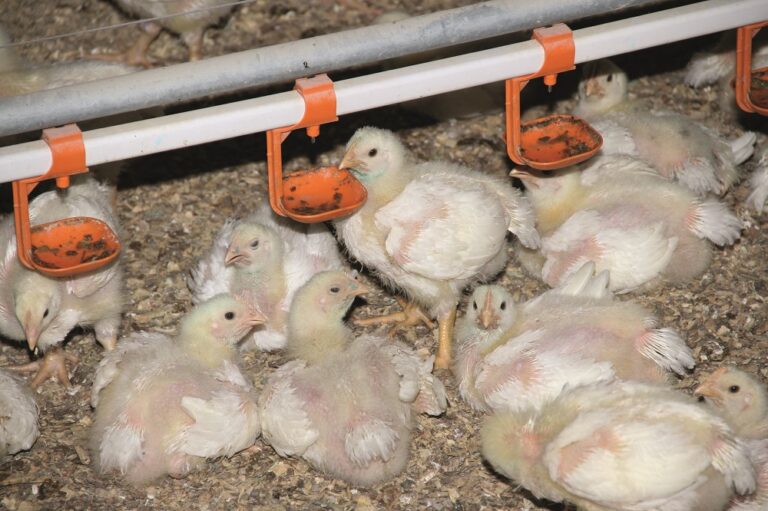How enzyme technology can help ease feed price pressure
This feature first appeared in the Poultry Business feed & nutrition supplement, published in March 2022
Volatility in global commodity markets, escalating cereal prices and a continued shortage of key amino acids is forcing nutritionists to consider alternative options when formulating poultry diets. Nutritionists are facing pressure to maintain the quality of rations while trying to keep costs as low as possible for producers and substituting higher cost ingredients, such as dietary lysine, with less expensive raw materials certainly offers economic advantages.
However, choosing to supply crude protein requirements from more abundant alternatives, for example soya, sunflower and rapeseed meals, can present challenges.
Agustina Rodriguez, Elanco technical nutritionist and consultant says that although these intact plant-derived ingredients are nutrient-dense and contribute towards meeting the dietary requirements of most poultry rations, they also contain high levels of undigestible β-mannans, which can cause nutritionally related upsets and performance losses.
“β-mannans are complex, undigestible fibres made up of long-chain sugars that are difficult to break down. They’re present in most plant-based raw materials and also have a similar molecular structure to certain pathogens – a structure known as Pathogen Associated Molecular Patterns (PAMPS). Their presence in feed often initiates an innate immune reaction, termed a Feed-Induced Immune Response (FIIR), which frequently triggers a series of physical and biological responses aimed at protecting the birds against infections,” she explains.
When this happens energy and nutrients are diverted away from growth to fuel a FIIR, which negatively impacts feed conversion ratio (FCR) and profit potential. Rodriguez says, birds suffering from this experience will usually encounter intestinal inflammation, compromised gut function and increased susceptibility to enteric infections.
Producers might also detect higher nitrogen levels excreted in faeces, wet litter, a rise in foot burn lesions and certain respiratory conditions – outcomes that have health, welfare and environmental implications.
Fighting FIIR
“Only a small amount of β-mannans is needed to trigger FIIR. Around 0.2% in a ration will begin to cause problems. However, supplying enzymes to a diet can negate this as these naturally derived biological tools can neutralise the anti-nutritive factors associated with these undigestible vegetable fibres. This helps to support the bird’s own digestive processes and optimise gut function and nutrient uptake,” says Rodriguez.
Hemicell, a patented exogenous enzyme has consistently demonstrated effective control of FIIR in commercial poultry flocks. This naturally derived feed additive contains β-mannanase, an enzyme that acts specifically on β-Mannans. Once ingested, the enzyme works immediately, turning the undigestible fibres that typically trigger a FIIR, into smaller, less invasive sugars the immune system cannot recognise as a threat.”
Added to the diet during the manufacturing process, Hemicell does not alter the nutritional quality or value of the ration. It works in the digestive tract alongside the birds’ own digestive enzymes and also other exogenous enzymes, to stabilise gut function, reduce nutrient waste and minimise the risk of associated enteric disorders.
Research has shown that in well-managed crops, β-Mannans can typically cause a 1% to 5% increase in conditions relating to poor intestinal health, and this deterioration in health status is responsible for a 3.4% higher incidence of pododermatitis, resulting in at least 3% more birds with severe footpad lesions.
A comprehensive study, evaluating results from field experiences across Europe, Middle East and Africa (EMEA) shows how incorporating enzymes into rations can reduce feed costs by enabling the use of lower spec rations. Data looking into the feed saving opportunities of feeding enzymes, was collected across 15 commercial sites over a six-year period.
The parameters monitored were FCR, growth and mortality when dietary energy levels were reduced. A total of 120 million birds were analysed for this data set. “The enzyme used in the trial, has proven to deliver economically significant production benefits. Broiler fed diets containing the enzyme continued to perform well, achieving a similar FCR, EPEF and mortality, even when energy supplies were reduced by 87kcal/kg1.
“These results suggest that Hemicell effectively controlled the ill-effects presented by B-mannans in the diet and that it enabled the broilers to make full use of the nutrients supplied in the ration for growth and performance. The results also demonstrate how adding enzymes to less expensive, lower spec formulations might offer producers and nutritionist the opportunity to make savings to feed costs without jeopardising productivity and performance,” says Rodriguez.


